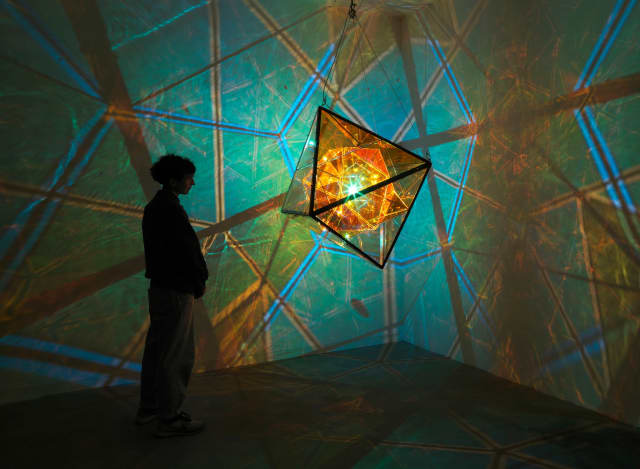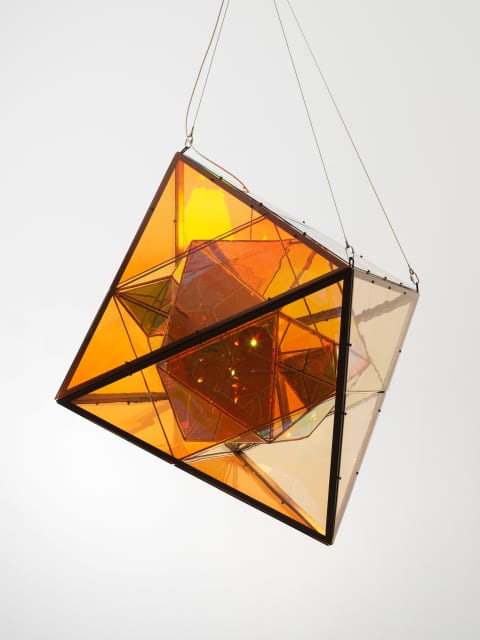In this artwork, the five Platonic solids are nested one within the other to create a complex, multilayered, hanging sculpture. Known since ancient times, the Platonic solids are the only geometrical forms that can be produced using identical, regular polygons for faces. The forms – the tetrahedron, octahedron, icosahedron, dodecahedron, and cube – have been accorded special significance in philosophy, religion, science, and alchemy over the millennia. The seventeenth-century astronomer Johannes Kepler, for example, proposed a model of the solar system not unlike the arrangement in this artwork. The model, which he termed the harmony of the spheres, presents the five forms embedded concentrically around the sun, with the five planets known in Kepler’s time orbiting around the edges of each polyhedron.
In this artwork, the faces of the various polyhedrons are made from a selection of coloured glass and dichroic, colour-effect-filter glass, a material that reflects certain wavelengths of light while allowing others to pass through it. As a result, the glass appears to be a different colour depending on the angle at which light hits the glass and the position from which it is seen. An LED mounted at the centre casts geometric patches of colour onto the surroundings. The various layers overlap and give rise to a multitude of colours and shapes beyond the actual tones used in the work.
| Artwork details | |
Title |
The inclusive host |
Year |
2023 |
Materials |
Coloured glass (orange, green, brown), colour-effect filter glass (cyan), stainless steel, paint (black), LED light system, ballast, dimmer |




